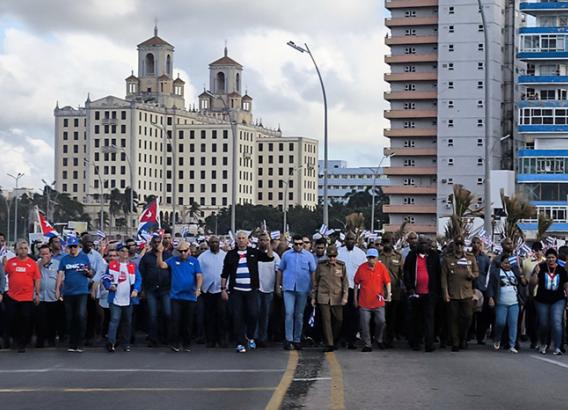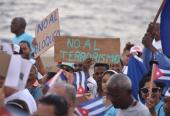U.S. Drug Policy: Seeking Evil in a Neighbor's Yard
especiales

While reports indicate a potential decrease in drug-related deaths this year in the United States, they often omit that the number of addicts has multiplied. For political reasons, the blame is being misplaced onto smaller Latin American nations, exploiting a malady whose primary distribution and profit centers involve American white-collar criminals, with Miami transformed into its main hub.
Drug abuse and addiction in the United States generate losses exceeding $740 billion annually, according to the National Survey on Drug Use and Health. This figure includes lost workplace productivity, healthcare expenses, and crime-related costs. The survey revealed that 29.7 million adults in the U.S. currently suffer from a substance use disorder. Of these, 74% also consume alcohol, while 38% struggle with an addiction to illicit drugs. Furthermore, one in eight adults simultaneously faces disorders related to both alcohol and drug use, making the addiction crisis one of the most severe public health problems in the country.
A Failed Solution
The solution pursued by the current U.S. president for this deeply entrenched domestic problem, which is accompanied by widespread impunity for related crimes, has been to look beyond American borders. This has involved populating the Caribbean Sea with warships, including a nuclear submarine, and launching criminal attacks on boats alleged to be carrying traffickers—a strategy now being simultaneously replicated in the Pacific. While these crimes against alleged criminals and unsuspecting fishermen increase, Americans continue to ingest harmful drugs, with the current landscape worsened by overdoses from fentanyl combined with stimulants. MSN notes that the proportion of deaths from this combination increased more than 50-fold between 2010 and 2021, rising from 0.6% to 32.3% of all overdose deaths. During this period, fatalities related to this mixture rose from 235 to 34,429, marking a drastic expansion of the opioid crisis in the U.S. Researcher Joseph Friedman indicated that the use of fentanyl together with stimulants has become the main cause of overdose deaths, underscores the Associated Press.
The maritime operations conducted by the U.S. in the Caribbean Sea and the Pacific Ocean are illegal under national and international law. They do not reduce the availability or consumption of illegal drugs, do not weaken organized crime, and cannot be justified by cocaine overdose deaths, because the most lethal substance in that country is fentanyl.
Unjustifiable Actions
The U.S. justifies these operations with the argument of halting the transit of cocaine that reaches its country and causes overdose deaths. However, it offers no proof that the attacked boats were transporting drugs, nor does it reveal the names of the victims; it even threatens land incursions into Colombia and Venezuela. Yet, official data from the Centers for Disease Control and Prevention confirm that 76% of overdose deaths recorded in the U.S. involve an opioid (prescription or illegal); 69% were related to synthetic opioids other than methadone (primarily fentanyl and its analogs); 28% involved cocaine; and 33% involved psychostimulants like methamphetamine.
Judicial investigations have demonstrated that the opioid epidemic, which causes tens of thousands of deaths annually, is an internal U.S. responsibility, not that of any other country. It was gestated in the 1990s through the aggressive marketing campaigns of laboratories that massively sold dangerous legal painkillers, creating a generation of addicts who then began to buy the substance on the illegal market and triggered one of the most severe health crises in the nation's history. Nevertheless, this crisis is being addressed with a security perspective, not a health one.
This demonstrates that the U.S. military strategy is disproportionate. It threatens the countries it accuses of producing the fentanyl (Mexico and China)—which causes the majority of overdose deaths—with trade sanctions. Meanwhile, it harasses the producers (Colombia) or transit countries (Venezuela) of cocaine with warlike operations off their coasts, accuses their presidents of being drug traffickers—without evidence—and threatens invasions. Above all, the strategy fails because the U.S. does not take responsibility for its own high internal demand for drugs.
Translated by Sergio A. Paneque Díaz / CubaSí Translation Staff













Add new comment